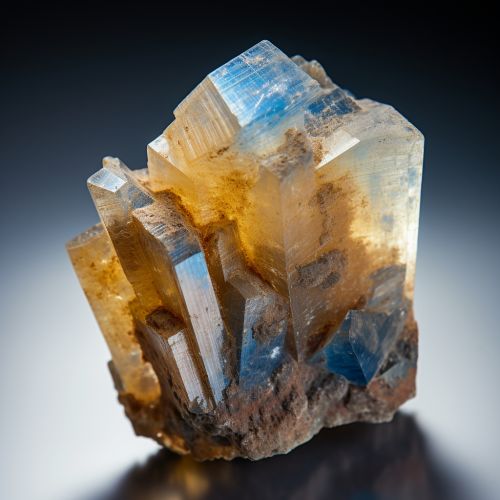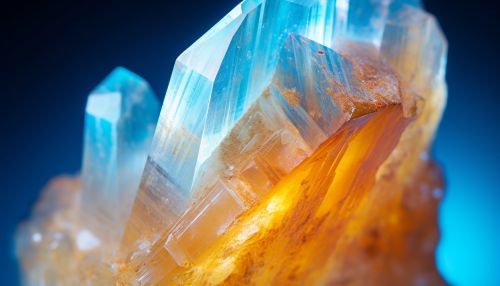Cordierite
Introduction
Cordierite or iolite is a magnesium iron aluminium cyclosilicate. Iron is almost always present and a solid solution exists between pure cordierite and Fe2Al4Si5O18, with a series formula: (Mg,Fe)2Al3(AlSi5O18) to (Fe,Mg)2Al3(AlSi5O18). A high-temperature polymorph exists, indialite, which is isostructural with beryl and has a random distribution of Al in the (Al,Si)6O18 rings.
Physical Properties
Cordierite, which is named after French geologist Pierre Louis Antoine Cordier, crystallizes in the orthorhombic system and possesses a distorted hexagonal close packing structure. The mineral's hardness, as measured by Mohs scale, is approximately 7 to 7.5, with a specific gravity of about 2.6 to 2.8. Its refractive index ranges from 1.527 to 1.560, and it has a vitreous to dull luster. The mineral can be colorless, but it is usually blue, yellow, or brown. It can also display pleochroism, showing different colors when viewed from different angles.
Occurrence and Formation
Cordierite typically forms in metamorphic rocks such as gneiss and schist, during high-grade regional metamorphism. It also occurs in igneous rocks, notably in shales that have been subjected to contact metamorphism. The mineral is often associated with other minerals such as biotite, garnet, and sillimanite. Notable locations for cordierite include India, Sri Lanka, Madagascar, and Brazil.
Uses and Applications
Cordierite has several important applications. In the gem industry, it is valued for its pleochroic properties and is often used in jewelry. In the ceramics industry, cordierite is used in the manufacture of thermal shock-resistant refractories such as those used in kiln furniture. Cordierite is also used in the automotive industry, where it is used in the manufacture of catalytic converters, due to its excellent thermal shock resistance.
See Also


